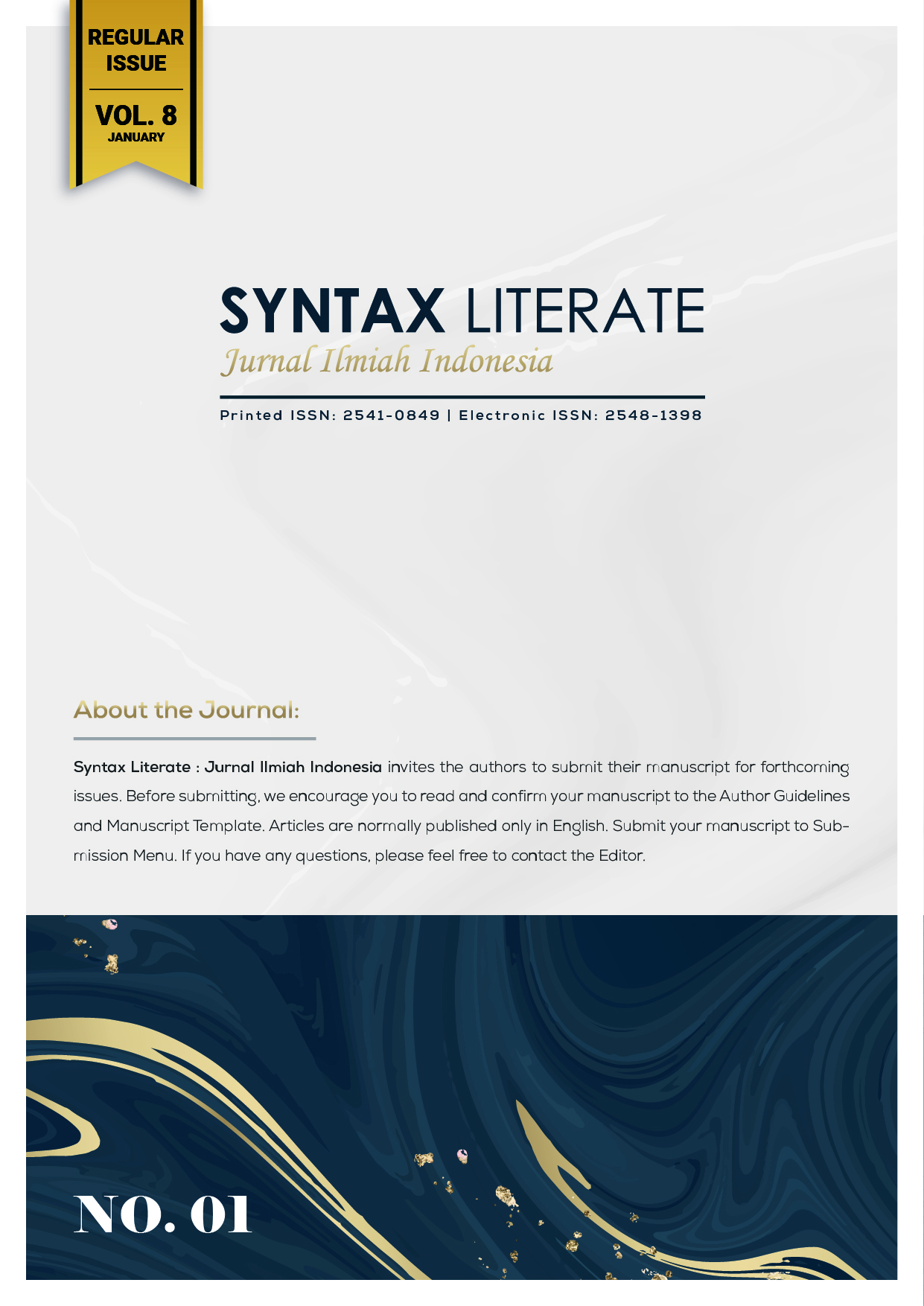Impact of climate change on Meteorological drought in Insana Barat District, Timor Tengah Utara, East Nusa Tenggara
Abstract
Uncertain climate change has an impact on the limited availability of surface water and low rainfall, causing Insana Barat District to become one of the areas prone to drought. Drought is a cause of poverty because it is usually associated with the cycle and spread of disease and threats to food security. Therefore, it is necessary to identify drought characteristics in this region for early anticipation and adaptation to reduce the impact of drought due to current and future climate variability. The Standardized Precipitation Index (SPI) is an index used to determine the deviation of rainfall from normal over a long period. The SPI method was chosen because of its ability to calculate the index and describe the severity of drought, and it is simpler than other methods. The advantage of SPI is that it is sufficient to use monthly rainfall data to compare drought levels between regions even with different climate types. The data used in this study is rain data from rain stations located in Insana Barat District from 2007 to 2021. The results show that in the drought deficit period the deficit period is 3 months in 2021 with an index value of -5.123. The worst 6-month deficit period for the -4,458 index occurred in 2020. The worst 12-month drought index deficit period of -2,191 occurred in 2021.
Downloads
References
Bera, Biswajit, Shit, Pravat Kumar, Sengupta, Nairita, Saha, Soumik, & Bhattacharjee, Sumana. (2021). Trends and variability of drought in the extended part of Chhota Nagpur plateau (Singbhum Protocontinent), India applying SPI and SPEI indices. Environmental Challenges, 5, 100310.
Chan, S. S., Seidenfaden, I. K., Jensen, K. H., & Sonnenborg, T. O. (2021). Climate change impacts and uncertainty on spatiotemporal variations of drought indices for an irrigated catchment. Journal of Hydrology, 601(February). https://doi.org/10.1016/j.jhydrol.2021.126814.
de Oliveira-Júnior, J. F., de Gois, G., de Bodas Terassi, P. M., da Silva Junior, C. A., Blanco, C. J. C., Sobral, B. S., & Gasparini, K. A. C. (2018). Drought severity is based on the SPI index and its relation to the ENSO and PDO climatic variability modes in the regions North and Northwest of the State of Rio de Janeiro - Brazil. Atmospheric Research, 212(2017), 91–105. https://doi.org/10.1016/j.atmos.
Febrianti, Nur, Murtilaksono, Kukuh, & Barus, Baba. (2018). Model estimasi tinggi muka air tanah lahan gambut menggunakan indeks kekeringan. Jurnal Penginderaan Jauh Dan Pengolahan Data Citra Digital, 15(1), 25–36.
Herdita, Chintya Ayu Permata. (2020). Analisia Kekeringan Meteorologi dengan Menggunakan Metode Standardized Preecipitation Index (SPI) dan Effecive Drought Index (EDI) di DAS Ngrowo. Universitas Brawijaya.
Hidayati, Deny. (2017). Memudarnya nilai kearifan lokal masyarakat dalam pengelolaan sumber daya air. Jurnal Kependudukan Indonesia, 11(1), 39-48Hidayati, D. (2017). Memudarnya nilai kearifa.
Li, Y., Lu, H., Yang, K., Wang, W., Tang, Q., Khem, S., Yang, F., & Huang, Y. (2021). Meteorological and hydrological droughts in Mekong River Basin and surrounding areas under climate change. Journal of Hydrology: Regional Studies, 36(July), 100873. https://doi.org/10.1016/j.ejrh.2021.100873.
Pangestu, Siti Yuniar, & Gernowo, Rahmat. (2015). Evaluasi Model Jaringan Syaraf Tiruan Metode Backpropagation untuk Prediksi Iklim Ekstrim dengan Korelasi Curah Hujan dan Tinggi Muka Laut di Semarang. Youngster Physics Journal, 4(1), 67–72.
Sudibyakto, H. A. (2018). Manajemen bencana di Indonesia ke mana? UGM PRESS.
Surmaini, Elza. (2016). Pemantauan dan peringatan dini kekeringan pertanian di Indonesia. Jurnal Sumberdaya Lahan, 10(1), 37–50.
Sutrisno, N., & Hamdani, A. (2019). Optimalisasi pemanfaatan sumber daya air untuk meningkatkan produksi pertanian. Jurnal Sumberdaya Lahan, 13(2), 73-88.
Tigkas, D., Vangelis, H., & Tsakiris, G. (2019). Drought characterisation based on an agriculture-oriented standardized precipitation index. Theoretical and Applied Climatology, 135(3–4), 1435–1447. https://doi.org/10.1007/s00704-018-2451-3.
WMO, À. (2012). World Meteorological Organization. Greenhouse Gas Bulletin (GHG Bulletin): The State of Greenhouse Gases in the Atmosphere Based on Global Observations Though, (8), 1–4.
Zhou, Han, Zhou, Wen, Liu, Yuanbo, Yuan, Yanbin, Huang, Jiejun, & Liu, Yongwei. (2020). Identifying spatial extent of meteorological droughts: An examination over a humid region. Journal of Hydrology, 591(September), 125505. https://doi.org/10.1016/j.jhydrol.2020.125505
Copyright (c) 2023 Maria Serlince Sanit, Turningtyas Ayu Rachmawati, Nailah Firdausiyah

This work is licensed under a Creative Commons Attribution-ShareAlike 4.0 International License.











